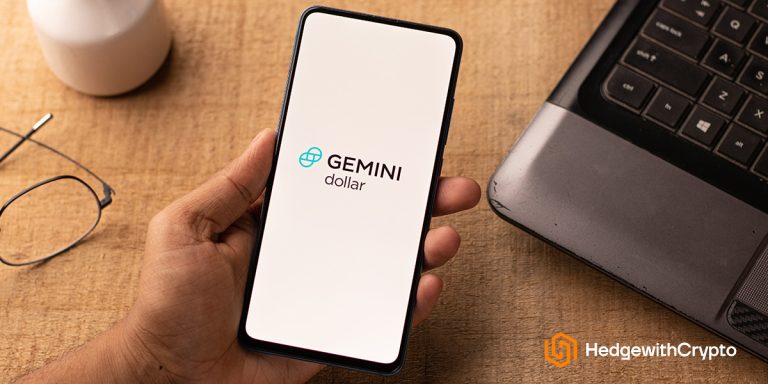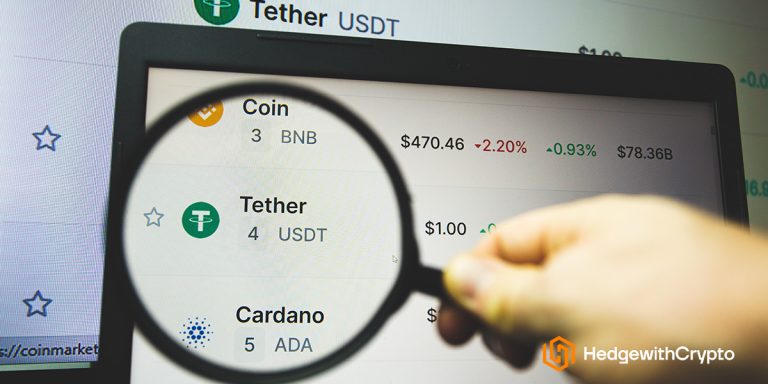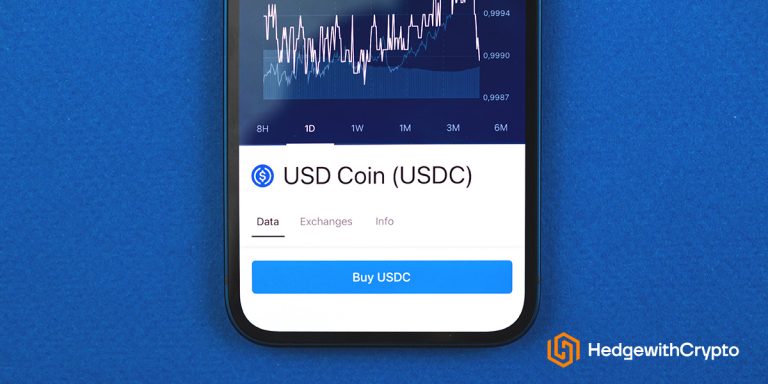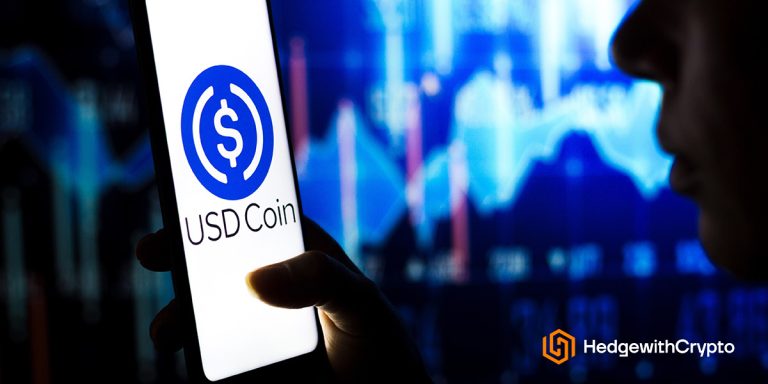What Is USDC, How It Works & Whether It’s Safe
TABLE OF CONTENTS
Stablecoins are a reliable alternative to the volatility of traditional cryptocurrencies as they maintain price stability (most of the time). Among the popular stablecoins is Centre's USD Coin (USDC), a tokenized US dollar. USDC is backed by dollar assets equivalent to one US dollar, making it a familiar unit of account to transfer value across the network and convert it into other cryptocurrencies. This guide will explain what USDC is, how it maintains its peg to the US Dollar, and whether it's safe to use.
The Basics of USDC
USDC is a stablecoin that aims to provide stability in the highly volatile cryptocurrency landscape. It's a tokenized version of the US dollar and falls under the category of fiat-backed stablecoins. USDC maintains a 1:1 peg with the US Dollar and is the second most traded stablecoin that facilitates billions of dollars in daily trading volume after Tether (USDT). USDC is widely accepted across several major and emerging blockchains, including Ethereum, Solana, Avalanche, Tron, Stellar Lumens, and several others.
USDC is a privately-operated project that is not affiliated with the US government. The parent company of USDC is a consortium that comprises several companies and investors, including Circle, the cryptocurrency exchange Coinbase, and Bitmain, which is a Bitcoin mining company. For full transparency, the company holds reserve assets in various forms, including the US dollar, Euros, US Treasury Securities, and cash balances held in regulated financial institutions, which can be viewed publicly.
What Is The Point of USDC?
As a digital currency native to the internet and blockchains, USDC allows users to send and receive funds anytime and anywhere. Transactions are executed rapidly on the respective blockchain network, ensuring fast and accessible transfers that operate 24/7. Given its similarity to traditional fiat currency USD and familiar unit of account, USDC is heavily used as a trading currency between other cryptocurrencies. Moreover, given its relatively stable price point, crypto investors will use USDC to hedge against market volatility.
This Is What USDC Is Used For
Principally a digital asset that allows value transfer across different borders, the USD coin has several other functions it performs:
- Cross-border remittance: USDC holders can easily transfer funds in tokenized format across countries supporting the crypto asset even after banking hours. In addition, recipients of the digital asset can easily store those funds in their crypto wallet without needing a bank account.
- Hedge against market volatility: While other cryptocurrencies like Bitcoin and Ethereum often encounter severe price swings, USDC is inherently stable due to its pegging to the US dollar. This makes them a good hedge against crypto market volatility as their value remains pegged to the US dollar. USDC holders can easily convert more volatile assets like Bitcoin to USDC and retain the value of their investments instead of it plummeting from price swings. Meanwhile, crypto investors looking for a less risky crypto investment mechanism can easily turn to USD coins to store their value.
- Dollar exposure: USDC is a great pathway for non-US residents to gain access to the world's reserve assets. This way, residents of other countries can easily buy and sell dollar-denominated assets from different regions without requiring a US bank account.
- On-ramp to blockchain networks: USDC is powered by smart contracts, which are computer-generated terms of agreement operating on blockchain networks. The collateralized fiat stablecoin is a payment gateway for several decentralized applications (dApps) in the crypto space. USDC is widely accepted on top and many more emerging blockchains, making it a versatile payment hub for value transfer. For instance, USDC transfers can be easily completed on multiple networks like Ethereum, Solana, Tron, and Avalanche protocols.
- Crowdfunding: For startup companies in financially underserved regions, USDC can serve as a means of raising funds from investors and donors through digital currency. Raising seed funding through USDC ensures that the value remains stable.
- Savings: Several crypto-facing businesses like Coinbase and Binance allow users to earn rewards from saving their USDC on their platforms. This way, users can earn sizable rewards better than the traditional financial system from their stablecoin without ever owning a bank account.
How USDC Stays At USD 1
USDC retains its one-dollar peg through two main systems: minting and burning, as well as its reserve assets. To illustrate, once an investor deposits USD funds into their Centre account, the equivalent value in USDC would be created. This process of changing regular fiat to a collateralized fiat stablecoin is called minting.
Meanwhile, if the user sells USDC, the token is burned and transferred back to the recipient's bank account as fiat currency. Burning is a terminology in the crypto space that refers to permanently eliminating an asset in the open market.
Through crypto investors' minting and burning process, USDC retains its one-dollar valuation. In addition, the Centre consortium holds USDC's equivalent value in reserve as cash in regulated US financial institutions or as dollar-denominated assets like US Treasury Securities.
This reserve closely tracks the quantity of USDC in the global ecosystem. This way, the tokenized US dollar has enough to back its continued issuance. Its reserve reports are also updated monthly with audits done by certified public accountants.
USDC As An Investment
USDC primarily focuses on the practical use case of value transfer through tokenized dollars. This means users can easily send value across borders but should not expect any value appreciation since it is fiat-pegged to the US. In essence, an investor’s USDC stash will always remain the same in its fiat currency equivalent so it should not be purchased as an investment.
However, USDC is not immune to USD price inflation, which means if inflation rises, the value of the tokenized dollar will also be affected. Even with its limitations, USDC remains a favorable choice for transferring value. Additionally, it protects investors against local fiat currency devaluation, especially in areas where these currencies are considered unstable.
Furthermore, investors can earn interest on USDC holdings on a few crypto exchanges. This way, they can earn rewards from either staking or lending their USDC. However, this does not make it risk-free, as all investments often carry a certain percentage of risk.
Why Is USDC Controversial?
USDC maker Centre came under public scrutiny following its revelation of holding about $3.3 billion in the defunct crypto-friendly Silicon Valley Bank (SVB). Following this announcement, the USDC coin briefly lost its one-dollar peg but has since regained its price equilibrium after the parent company, Centre, stepped in to restore investors' funds.
Is USDC Safe?
While many crypto assets are termed unsafe, USDC is not considered a risky asset due to its regulatory position and is one of the safest stablecoins to use in the crypto industry. It is the largest regulated stablecoin by US authorities and is a licensed money transmitter service like PayPal and Stripe. Moreover, since USDC holds short-dated US Treasuries and cash deposits within the US banking system, it's considered a safer crypto option for many investors.
To provide further transparency, USDC is regularly audited once a month using attestation standards laid out by the American Institute of Public Certified Accountants (AICPA). It follows all global anti-money laundering and anti-terrorism financing rules, which means all users' deposits.
Centre, the company that runs USDC, is also profitable. The company makes money by accruing interests from the reserve assets and transaction fees on USDC. For instance, its January 17, 2023 reserve report puts its USDC reserve report at $43.5 billion, even more than the $28 billion in circulation.
Is it possible For USDC To Crash
While stablecoins are designed to maintain a 1:1 peg with the relevant fiat currency, a few instances have seen them depeg in the past. This usually occurs when the reserve assets are not properly backed with the funds in circulation. In the case of USDC, the stablecoin de-pegged following a series of bank runs on the Silicon Valley Bank (SVB). At the time, the stablecoin company said it held over $3 billion in the crypto-friendly bank, and the news of SVB going under led to a depeg of USDC.
This issue has since been rectified due to the strong off-chain backing it enjoys. The platform has billions of dollars worth of US Treasury Securities and other liquid items. For instance, its April 2023 monthly report by Deloitte showed that it held over $30 billion in USDC reserve assets, roughly the same amount in open circulation. With its reserves properly maintained, the USDC is expected to maintain the dollar peg.



